Are you searching for memorable experiences on your trip to Malta? This blog post covers Malta’s historical landmarks, natural wonders, and unique cultural encounters. You will learn about some of the notable attractions, attractions in Malta & Gozo, and engaging activities that remove the guesswork from planning your visit. Gain practical tips to overcome travel planning frustrations and design a trip that meets your interests. Enjoy clear directions and useful insights into things to see and do in Malta.
Discover Malta’s Rich History
Malta’s story is written in stone, from ancient temples to Baroque capitals and wartime bunkers. Start in Valletta, Europe’s smallest capital, where every street whispers of knights and grand ambitions.
Wander Through Valletta’s Baroque Streets
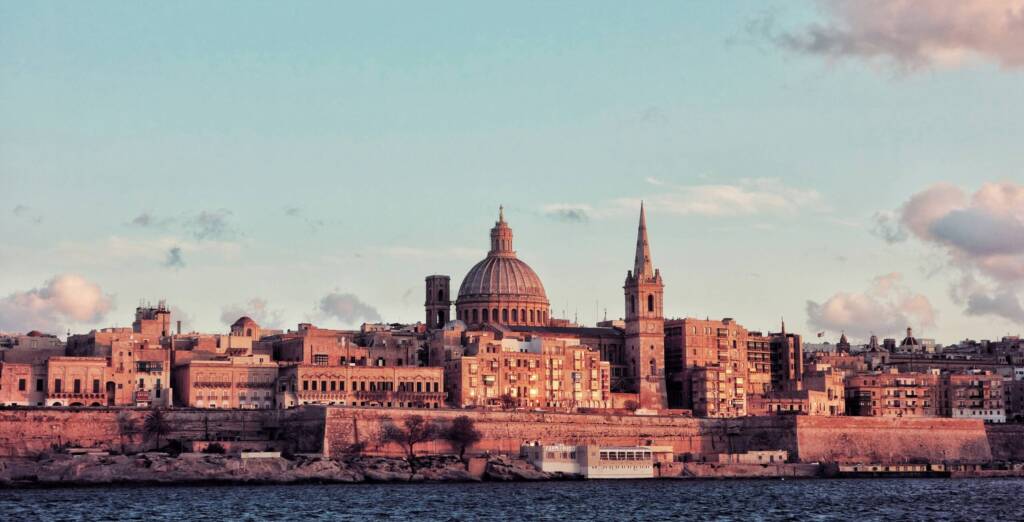
Valletta’s compact grid of honey-coloured streets was laid out by the Knights of St. John in the 1560s, creating one of Europe’s finest examples of a planned Baroque city. Today, Republic Street’s grand facades give way to shaded alleys where the air carries church bells, café chatter and the faint clink of filigree silver being crafted in artisan workshops.
- City Gate & Triton Fountain
Pass under the contemporary City Gate—designed by Renzo Piano in 2014—to emerge beside the dramatic Triton Fountain. Pause here to admire the sculpted bronze figures and orient yourself before diving into the network of streets beyond. - St. John’s Co-Cathedral
Step inside this unassuming stone exterior and you enter one of Europe’s most lavish interiors. Vaulted ceilings blaze with gilded carvings, while Caravaggio’s “Beheading of Saint John” hangs in the Conventual Church. To avoid queues, aim for the cathedral’s opening hour (09:00) and book your ticket online in advance. - Grandmaster’s Palace & Armoury
A short stroll along Republic Street brings you to the former seat of the Grand Masters. The palace’s State Rooms display frescoed ceilings and elaborate furnishings, while the adjacent Armoury holds thousands of weapons—from Ottoman muskets to knightly swords. - Hidden Chapels & Artisan Alleys
Slip off Republic Street into side lanes like Merchants’ or Strait Street, where tiny Baroque chapels (such as the Chapel of the German Langue) nestle among silversmiths’ forges and Mdina glass studios. Look for bonnet-tailed shop cats sunning themselves on limestone doorsteps. - Upper Barrakka Gardens
Climb the steps to this terraced garden—once a private promenade for the Knights—to sip your morning coffee under pergolas of bougainvillaea. Arrive ten minutes before the daily cannon at 12:00 to photograph the salute against the backdrop of the Three Cities rising across the Grand Harbour. - Tips for Your Visit
- Best Times: Early morning (09:00–10:30) for quieter streets and softer light, or late afternoon (16:00–18:00) when the limestone glows gold.
- Self-Guided Tours: Download the Heritage Malta app for a free audio guide that highlights hidden carvings, local legends and architectural milestones.
- Café Culture: Stop at a pavement café in a side square—order a robust espresso with a slice of Maltese almond drudges (drżazżel) and watch the world go by.
- Mobility Notes: While most streets are cobbled, gentle slopes and ramps connect major sites; bring comfortable walking shoes.
By weaving between grand piazzas and intimate courtyards, you’ll uncover Valletta’s layers of history—from knightly pageantry to present-day artisan craft—all framed by one of the Mediterranean’s most atmospheric cityscapes.
Escape to Mdina, the “Silent City”

Perched on its hilltop since Phoenician times, Mdina unfolds like a living museum of medieval and Baroque architecture. Once Malta’s capital, its fortified walls and narrow, car-free streets offer a welcome retreat from the island’s busier hubs. As you enter through the dramatic Mdina Gate, you’ll be transported to an era of grand palaces, hushed cloisters and sun-dappled courtyards—no wonder filmmakers have used Mdina’s timeless ambience for historical dramas and fantasy series alike.
- Bastion Panorama
Follow signs to the bastion walkways, where you’ll encounter sweeping 360° views of ochre fields, terraced gardens and the sapphire Mediterranean. The light is especially enchanting at golden hour, when the limestone walls blush pink and the surrounding countryside shimmers in the late-afternoon sun. - St Paul’s Cathedral & Museum
Dominating the main square, St Paul’s Cathedral (built 1697) showcases a richly frescoed interior and Baroque marble floors. Adjacent, the Cathedral Museum displays religious artefacts, votive paintings and silver reliquaries—providing insight into Mdina’s ecclesiastical heritage. - Palazzo Vilhena
This elegant Baroque palace, now home to the National Museum of Natural History, allows you to wander frescoed halls and botanical exhibits. After exploring, relax in its hidden courtyard café, where a scoop of homemade gelato feels every bit as regal as the palace surroundings. - Mdina’s Hidden Corners
Beyond the main thoroughfare, seek out photogenic lanes like Triq iz-Zwingl and Triq il-Kbira. Here you’ll find artisan workshops, galleries and tiny tapas-style bars serving local wines and Maltese liqueurs—perfect for a leisurely mid-afternoon pause. - Guided Walking Tours
Small-group tours (often 60–75 minutes) depart from just inside the Mdina Gate and weave together legends of noble families, tales of medieval knighthood and anecdotes of the city’s ghostly past. A knowledgeable guide can point out concealed inscriptions, painted coats-of-arms and architectural quirks you might otherwise miss. - Best Times to Visit
Arrive just after opening (around 09:30) to enjoy quiet streets before coach tours arrive. Alternatively, linger until sunset: Mdina’s lamps cast long shadows on cobblestones, and the cool evening air brings out the scent of jasmine and citrus from private gardens.
Lose yourself in Mdina’s tranquil atmosphere, where every archway and palace façade whispers centuries of history—and perhaps a few delightful secrets, if you know where to look.
Stand Among Prehistoric Giants

Just south of Valletta, the twin temple complexes of Ħaġar Qim and Mnajdra stand like silent sentinels on a windswept ridge overlooking the Mediterranean. Carved from pale globigerina limestone more than 3,600 years ago, their corbelled chambers and forecourts reveal staggeringly precise Neolithic stone-cutting—and a sophisticated understanding of the heavens.
Wander among monolithic pillars—some tipping six metres high—and imagine the ceremonies that once took place on these sun-baked plinths. Ħaġar Qim’s rounded altars and horned recesses speak of ritual feasting, while Mnajdra’s three-temple layout aligns perfectly with solstice sunrises and equinox light shows in its lower sanctuary.
Visitor Highlights & Tips
- Combined Heritage Ticket: Valid for both Ħaġar Qim and Mnajdra (plus their modern visitor centre), this ticket lets you explore at your own pace—no need to choose one or the other.
- Interactive Visitor Centre: Between the sites you’ll find sheltered displays of carved altars, prehistoric tools and life-size temple reconstructions. Touch screen exhibits explain excavation layers and offer 3D temple walkthroughs.
- Best Light: To see sunrise flood Mnajdra’s lower chamber, arrive by 06:30 on equinox mornings (March and September). Otherwise, late afternoon brings warm glow to Ħaġar Qim’s curve-walled forecourt.
- Getting There: Regular buses (52/53) run from Valletta to the Qrendi terminus; from there a free shuttle service conveys you up the hill to the site entrances.
- Accessibility: Paved ramps link the visitor centre to both temples, though uneven stone floors mean a sturdy pair of shoes is essential. Wheelchair users should check opening-season timetables for guaranteed shuttle availability.
With sweeping sea views as your backdrop, Ħaġar Qim and Mnajdra offer a rare chance to walk in the footsteps of Europe’s earliest temple builders—an unforgettable highlight on any Maltese itinerary.
Explore Knights’ Legacy & WWII Heritage

Malta’s Baroque skyline and wartime bunkers both spring from its strategic importance. When Charles V gifted Malta to the Knights Hospitaller in 1530, they fortified harbors and built hospitals and churches. Centuries later, during World War II, the island endured relentless siege—air-raid shelters and hidden command rooms bear witness to residents’ resilience.
- Lascaris War Rooms: Beneath Upper Barrakka Gardens lies this underground Allied command centre—book a 90-minute guided tour to imagine Churchill and Eisenhower poring over maps here.
- Fort St. Elmo & National War Museum: Stand on ramparts where 1565’s Great Siege met 1942’s bombardment. Inside the museum, personal letters and medals bring Malta’s “Finest Hour” into sharp relief.
Swim, Hike and Explore Natural Wonders
From sapphire seas to rose-gold cliffs, Malta’s natural playground offers something for everyone—whether you’re after a leisurely dip or a clifftop adventure.
Dip into the Blue Lagoon on Comino

Comino’s Blue Lagoon is Malta’s most celebrated day-trip destination: a shallow, sheltered bay of shimmering turquoise surrounded by rugged limestone cliffs. Although the main ferry sails from Ċirkewwa, you can also depart from St Paul’s Bay or Sliema—each offering its own pace and perspective on the journey.
- Getting There
- Ċirkewwa: The closest point on Malta’s northern tip. Regular car-ferry and passenger-only services run every 30–45 minutes between 09:00 and 17:00. Crossing time is about 20 minutes.
- St Paul’s Bay: Smaller passenger boats depart hourly from the village promenade (near the old jetty). Expect a 40–50 minute ride past sandy beaches and rocky coves.
- Sliema: Speedboat tours leave from the Marina or Tigné Point, typically between 10:00 and 14:00. These adventure‐style crossings take 45–60 minutes but often include guided coastal commentary and optional snorkelling stops en route.
- Snorkelling & Swimming
The lagoon’s clear shallows (1–2 metres deep) extend well out from shore, ideal for snorkellers to drift among submerged rock gardens teeming with wrasse, damselfish and the occasional octopus. Bring your own mask and fins if you can—on-site hires are limited and tend to sell out by mid-morning. - Coastal Walk & Alternative Cove
A signposted loop of roughly 2 km skirts the eastern headland past the ruins of Santa Marija Tower. The gentle stroll (30–40 minutes) rewards you with hidden inlets and nesting seabirds. After the lagoon, continue west to Santa Marija Bay—another pristine cove where snorkelling and solitude are easier to find. - Best Time to Visit
Aim for the earliest departure (around 09:00) to reach the lagoon before larger day-trip crowds arrive. By 11:00, sunbeds and shady ledges are at a premium. Late afternoon crossings back to Malta (from 16:00) offer calmer waters and cooler air for the return. - Facilities & Refreshments
Basic kiosks near the landing jetty serve cold drinks, light snacks and ice-cream—but no full kitchen. Public toilets are available by the jetty, and seasonal sunbeds and umbrellas can be rented from local operators. Many visitors pack a picnic to make the most of the tranquillity.
With multiple departure points and transport options, the Blue Lagoon makes for a flexible, unforgettable escape—whether you choose the quick hop from Ċirkewwa, the coastal cruise from St Paul’s Bay or the speedboat thrill from Sliema. Just remember to pack snorkel gear, sun protection and a sense of wonder as you step into one of the Med’s most iconic seaside settings.
Marvel at Dwejra Bay’s Rock Formations
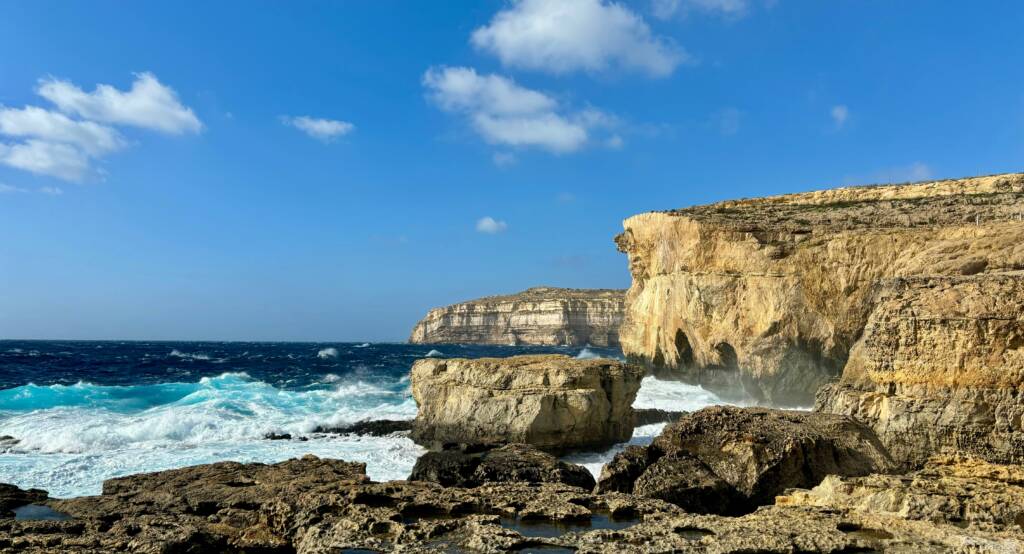
On Gozo’s rugged west coast, Dwejra Bay showcases some of Malta’s most striking coastal geology. Though the iconic Azure Window collapsed in 2017, the area remains mesmerising: sheer limestone cliffs plunge into the sea, a tunnel-like inlet known as the Inland Sea beckons exploration, and the honeycomb-patterned Fungus Rock stands offshore like a silent sentinel.
Begin at the car park above the bay and follow the paved path down to the water’s edge. Here you’ll find traditional dgħajsa boats offering regular crossings through a narrow archway into the Inland Sea’s sheltered lagoon. Once inside, the sea’s calm surface mirrors the cliff walls—late morning light, between about 10:00 and 12:00, gives the water an almost surreal turquoise hue, ideal for photography and video.
A short stroll along the headland brings you to the small interpretive centre, where interactive displays and virtual-reality reconstructions vividly trace the life—and dramatic collapse—of the Azure Window. These exhibits provide context for the landscape you’re exploring, helping you appreciate how wind, waves and rock conspired over millennia to sculpt this coast.
Top Tips for Your Visit
- Boat Crossings: Boats depart roughly every 20 minutes; no need to book ahead—just join the queue by the jetty.
- Best Light: Aim for late morning when the sun floods the lagoon entrance; for softer shadows on the cliffs themselves, return around late afternoon.
- Coastal Walks: Follow the clifftop trail westward to discover hidden caves and the dramatic Needle’s Eye arch—a photographer’s dream at sunset.
- Safety First: Watch your step on wet rock ledges, and heed any warning signs about unstable edges.
- Combine with Other Gozo Highlights: Dwejra is only a 10-minute drive from Victoria’s Citadel—pair your visit with lunch in Gozo’s capital and a stop at the Ġgantija Temples for a full day of island exploration.
With its combination of geological drama, historic intrigue and immersive exhibits, Dwejra Bay remains a “must-see” destination—proof that even after the loss of its most famous landmark, Gozo’s coastline still inspires awe.
Relax on Mellieħa Bay’s Sandy Beach
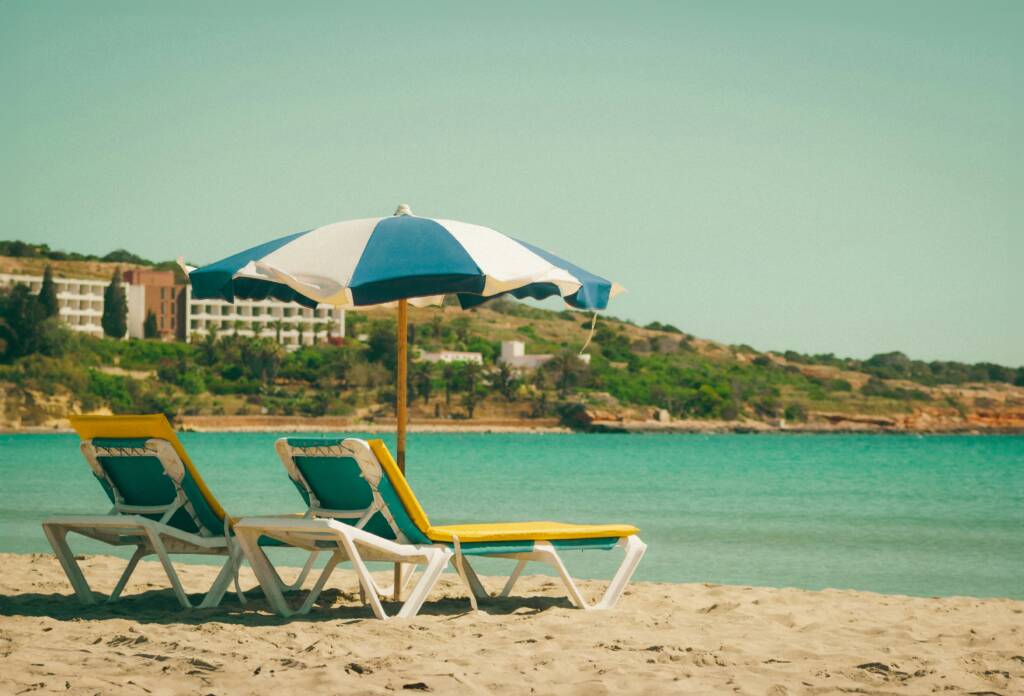
Stretching nearly a kilometre along Malta’s northern coast, Mellieħa Bay offers soft, shallow sand and calm, crystal-clear waters—a striking contrast to the island’s limestone fortresses. Ideal for families, sunseekers and watersports enthusiasts alike, the bay combines natural beauty with handy amenities.
- Wide Shore & Gentle Waters
Mellieħa Bay’s gradual slope makes it perfect for paddling and learning to swim. The water remains waist-deep for several metres, so little ones can splash about safely while you relax on the sand. - Facilities & Beach Services
A row of kiosks and beach cafés provides cold drinks, light bites and simple beach gear hire (chairs, umbrellas and pedalos). Lifeguards patrol the central area during high season, and clean public toilets and showers are within easy reach. - Water Activities
Look out for windsurfing and stand-up paddleboarding centres along the bay. Equipment can be hired by the hour, and beginners’ lessons are available most mornings when the wind is light and the sea calm. - Scenic Walk to the Red Tower
Just behind the beach, blue-and-white waymarkers lead on a gentle uphill trail to the 17th-century St Agatha’s Tower (the “Red Tower”). The 20-minute walk through maquis shrubland rewards you with panoramic views north to Comino and south back over Mellieħa Bay. - Best Times to Visit
Early morning offers the quietest stretch of sand and the softest light for photography. Late afternoon is perfect for a cooler swim and golden-hour views of the cliffs turning warm pink. - Getting There
Regular buses from Valletta and St Paul’s Bay stop just metres from the shore. If you’re driving, ample parking is available on the adjacent promenade.
Whether you’re here to laze on towels, explore the shallow bays or venture up to the historic tower, Mellieħa Bay delivers a quintessential Maltese beach experience—soft sands, safe waters and every convenience within strolling distance.
Savour Malta’s Culture & Cuisine
Maltese life pulses in its festas, markets and hearty dishes. Slow down, taste and mingle—the islands’ flavors are as warm as their people.
Join a Village Feast

From late spring through autumn, Malta’s villages come alive for their annual festas—vibrant celebrations in honour of each parish’s patron saint. Streets are draped in lights and bunting, brass bands parade past ochre-coloured churches, and at night the skies sparkle with fireworks displays. Every feast is a chance to step into genuine Maltese community life: join locals in processions, sample homemade treats at street stalls and linger over lace-draped church squares echoing with hymns and horns.
- Feast Season & Schedule
Feast days run roughly from May to October, each village choosing a weekend closest to its saint’s actual date. By late afternoon, you’ll see decorations going up; brass-band marches usually start around 19:00–20:00, followed by the religious procession at 21:00, and a midnight fireworks finale. - What to Sample
Street stalls brim with local snacks:- Pastizzi and imqaret (date-filled pastries) for a quick bite.
- Ftira sandwiches loaded with tuna or kappara (capers) and ġbejniet (cheeselets).
- Helwa tat-Tork (sesame and honey sweets) and spun-sugar treats as evening desserts.
- Practical Tips
- Check Dates in Advance: Parish noticeboards and local council websites publish feast calendars each spring—plan to arrive by 18:00 to secure a good vantage point.
- Cash Only: Many stalls accept cash only—keep small notes (coins and £1/£2 equivalents) handy.
- Travel & Parking: Narrow village lanes often close for processions—park on the outskirts and walk in. Buses to major villages run until about 22:30, after which taxis are your best bet.
- Dress & Comfort: Wear sturdy shoes for cobbled streets, and carry a light layer for cooler evenings. If you’re sensitive to noise, consider ear protection for fireworks.
- Family Friendly: Feasts are very safe for children, with face-painting booths, fairground rides and communal seating areas where you can rest between events.
Top Feast Examples
- Nadur (Gozo) – Feast of Saints Peter & Paul around 29 June, famous for its illuminated parade and village regatta on the bay.
- Birgu (Vittoriosa) – Our Lady of Victory on 8 September, complete with historical reenactments and a grand fireworks display over the harbour.
Dive into a festa and you’ll discover why these centuries-old traditions remain the heart and soul of Maltese island life.
Browse Handcrafted Souvenirs

For a truly local experience, set aside an afternoon to wander through Malta’s markets and craft hubs. Here you can see artisans at work, learn about age-old techniques and hand-pick treasures that tell the story of the islands. Whether you’re hunting for delicate filigree jewellery, vibrant Mdina glass or hand-stitched lace, these spots offer a feast for the senses—and plenty of chances to chat with the makers themselves.
- Ta’ Qali Crafts Village (Mon–Sat 09:00–18:00)
Nestled in a former WWII airfield, Ta’ Qali is home to workshops and showrooms where glassblowers shape molten orbs, lace-makers coax patterns from thread, and potters wheel clay into rustic bowls. Many artisans welcome visitors into their studios—perfect for seeing a piece come to life and hearing the inspiring stories behind each design. Souvenir tip: small filigree earrings start at around €10, while a hand-blown glass ornament is typically €15–€25. - Merchants Street, Valletta (Daily 10:00–19:00)
In the heart of the capital, shaded arcades on Merchants Street house a mix of family-run shops and pop-up stalls. Here you’ll find leather-bound journals embossed with Maltese motifs, locally produced olive wood kitchenware, framed art prints of limestone streets, and handcrafted beaded rosaries. Many vendors are happy to demonstrate techniques or help you customize a piece—just ask! - Marsaxlokk Sunday Market (Sun 06:00–13:00)
Although famed for its seafood, Marsaxlokk’s waterfront market also hosts local crafts every Sunday. Browse stalls of woven baskets, sea-inspired ceramics and artisanal soaps scented with local rosemary and orange blossom. Felted wool coasters and salted-caramel honey from nearby farms make charming gifts you won’t find elsewhere.
Whether you’re filling a suitcase or shipping home a parcel, these markets and villages promise unique souvenirs—and the warm hospitality that makes every purchase memorable.
Savour Malta’s Iconic Foods & Drinks

From flaky pastries to bittersweet sips, Maltese cuisine delights at every turn. Here are the must-try bites and beverages to fuel your island adventures:
- Pastizzi
Malta’s unofficial national breakfast: a crisp, buttery pastry filled with either ricotta cheese or mushy peas. You’ll find them piping hot from the early morning at local bakeries—try Crystal Palace in Naxxar or Pastizzeria San Paolo in Mosta. Two or three make the perfect on-the-go snack. - Ftira
A round, chewy bread split open and piled high with tuna, capers, olives, fresh tomatoes and ġbejniet (local cheeselets). Grab one from a Marsaxlokk market stall or a Valletta bakery and enjoy it by the waterfront. - Fenek (Rabbit Stew)
Considered Malta’s national dish, rabbit is marinated in red wine, garlic, bay leaves and thyme, then slow-braised until meltingly tender. Book ahead for Il-Ġnien ta’ Pinu in Gozo or head to Ta’ Kris in Sliema for a homely version. - Kinnie
This uniquely Maltese soft drink blends bitter oranges with aromatic botanicals and a hint of caramel. Serve ice-cold alongside spicy snacks or sip it solo for a refreshingly herbal lift. - Cisk Lager
Brewed since 1928, Cisk is Malta’s flagship golden lager—crisp, light and perfect with seaside views. Find it on draught at almost every pub; for a brewery tour and tasting flight, book ahead at the Cisk Tap House in Paola.
Pair pastizzi with a chilled Kinnie for a breakfast twist, follow your rabbit stew with a pint of Cisk, and always leave room for a sunset ftira feast by the harbour. Savour every bite—and every sip—of Malta’s vibrant culinary heritage!
Jump Into Adventure
Adventure awaits both above and below the waves. Whether you’re a novice or seasoned explorer, Malta’s outdoors deliver.
Dive or Snorkel Wrecks and Reefs
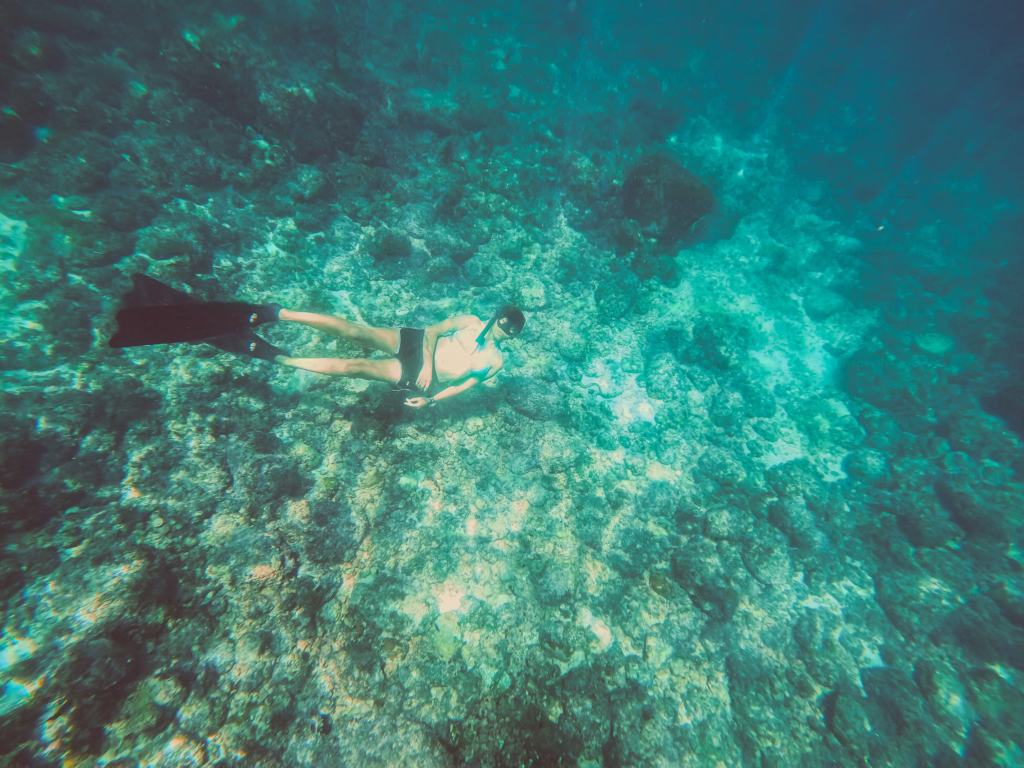
Dive or Snorkel Wrecks and Reefs
Malta’s crystalline seas and calm conditions make it one of Europe’s premier dive destinations. Whether you’re a certified diver or a keen snorkeller, these underwater sites reveal shipwrecks, dramatic drop-offs and thriving marine ecosystems.
- Diverse Dive Sites
- MV Rozi (Comino): A former passenger ferry scuttled in 1993, now resting upright at 20 metres. Its superstructure and open decks create an enchanting habitat for schools of bream, wrasse and octopus.
- P29 Patrol Boat (St Paul’s Bay): Sunk in 2007 at 14 metres, this small patrol launch offers easy penetration dives through cabins and hatches—ideal for novices honing buoyancy control.
- Um El Faroud (Cirkewwa): Once an oil tanker, now a vast artificial reef at 35 metres, it attracts groupers, scorpion fish and occasional eagle rays gliding through its hull.
- Iconic Reefs & Grottos
- Blue Hole & Cathedral (Gozo): This pair of adjacent sites features a natural sinkhole leading to an underwater archway. Swim through the “Cathedral” cavern at around 15 metres and emerge into open sea, where you’ll spot parrotfish schooling among gorgonian fans.
- Ħondoq Bay (Gozo): A shallow snorkel zone with bright coral patches and colourful nudibranchs—perfect for families or first-timers keen to see Mediterranean seahorses and damselfish.
- Guided Snorkel Trips
Local operators run small-group snorkel tours departing from Wied iż-Żurrieq or Xlendi. Expert guides point out hidden grottoes, discuss tidal flows and teach you where to spot moray eels peeking from crevices. - Dive Centres & Training
PADI and SSI dive schools along St Paul’s Bay, Marsaxlokk and Cirkewwa offer discover-scuba sessions for beginners, full certification courses and daily guided dives. Instructors emphasise safety briefings, proper weighting and environmental awareness to protect Malta’s fragile marine life. - Best Conditions
Visibility often exceeds 30 metres between May and October, when water temperatures range from 20 °C to 27 °C. Winters can be cooler (15 °C–18 °C) and seas slightly choppier, but many divers still enjoy wrecks without the summer crowds.
Before you dive or snorkel, check local weather forecasts and sea-state reports, and always follow your guide’s advice. Below the surface, Malta unveils a world of sunken history and vibrant reef life—ready for your next adventure.
Hike Along Clifftop Trails

Stretch your legs on trails that hug dramatic shorelines.
Discover Malta’s rugged beauty on foot with well-marked paths that follow sheer cliffs, verdant valleys and secluded coves. Lace up sturdy shoes, pack water and a light snack, and set off at first light for cooler air and softer light on the rocks.
- Victoria Lines (≈10 km; Moderate, 4–5 hours)
Tracing a 19th-century defensive wall across Malta’s “backbone,” this route undulates along ridges and through pine-studded hills. Begin at Madliena Ridge—look for the painted blue arrows—and follow the semi-ruined ramparts westward. Highlights include sweeping panoramas of the north coast, ruined fortifications peeking through gorse, and rare wildflowers in spring. Several shaded rest spots make it easy to pause for photos or a picnic before looping back to your start point. - Dingli Cliffs to Għar Lapsi (≈6 km; Moderate, 3–4 hours)
From Malta’s highest mainland point at Dingli Cliffs, descend along a stone-flagged path past terraced fields and solitary chapels. Below, you’ll find hidden sea-caves carved into the limestone—perfect for a mid-hike wander. The trail finishes at Għar Lapsi, where crystal-clear waters invite you to cool off with a refreshing swim or snorkel among colourful fish. Return buses run from the nearby village, or you can retrace your steps for a longer circular walk.
Top Tips:
- Best Time: Early morning or late afternoon to avoid midday heat and catch golden-hour light.
- What to Bring: Plenty of water, sunhat, sunscreen and a basic first-aid kit—there’s little shade on either trail.
- Navigation: Trails are waymarked, but it pays to have an offline map or a compass-equipped phone in case signs are faded.
- Wildlife & Flora: Keep an eye out for kestrels hovering overhead, lizards darting among rocks and seasonal blooms of rockrose and Maltese toadflax.
These clifftop routes combine dramatic sea views, a touch of history and the thrill of exploring Malta’s less-trodden corners—all within a few hours’ walk.
Paddle into Sea Caves

Glide across calm bays and beneath towering limestone cliffs to discover Malta’s secret marine caverns. Kayaking here offers a blend of gentle exercise, natural beauty and a dash of adventure—perfect for both novices and experienced paddlers.
Embark on a guided excursion for local insight and hassle-free gear, or strike out on your own once you’ve mastered the basics. Either way, you’ll weave through narrow entrances, peer into shadowy grottoes and emerge into sunlit coves that few visitors ever see.
Key Tips for a Memorable Paddle
- Choose Your Departure Point:
- Wied iż-Żurrieq (southwest Malta): Famous for its Blue Grotto, this slipway gives access to several adjacent caves and arches.
- Xlendi Bay (Gozo): A sheltered cove ideal for beginners, with a network of small inlets and rock formations to explore.
- Dwejra Bay (Gozo): Launch near the Inland Sea and paddle through a natural tunnel into open water—keep an eye on changing light for the best photo ops.
- Guided Tours vs Self-Hire:
- Guided Tours typically last around two hours and include kayak, paddles, buoyancy aid and expert instruction. Guides share snippets of local history, point out hidden alcoves and ensure you maintain a safe route. Morning departures often mean calmer seas and softer light for photography.
- Self-Hire suits confident paddlers who prefer a flexible pace. Most rental operators provide a quick safety briefing, buoyancy aid and helmet. Always check tide tables and sea forecasts: some caves become inaccessible at high tide, and rip currents can appear unexpectedly.
- Best Time to Paddle:
- Spring to early autumn offers the steadiest conditions, with water temperatures from 18 °C to 26 °C. Shore winds tend to pick up by mid-afternoon, so plan your trip for first light or late afternoon for glassy seas.
- Safety and Comfort:
- Wear a well-fitting buoyancy aid and a sun-protective top or rash vest.
- Stow valuables in a small dry bag or waterproof case.
- Bring plenty of drinking water, especially in summer heat.
- Let someone on shore know your intended route and return time.
Whether you join a small-group tour or chart your own course, kayaking Malta’s sea caves reveals a side of the islands that few travellers ever glimpse—crystalline waters, sculpted rock walls and a sense of true exploration.
Gozo: Malta’s Neighboring Gem
A short ferry ride brings you to Gozo, where pace slows and pastoral landscapes prevail.
Climb Victoria’s Citadel
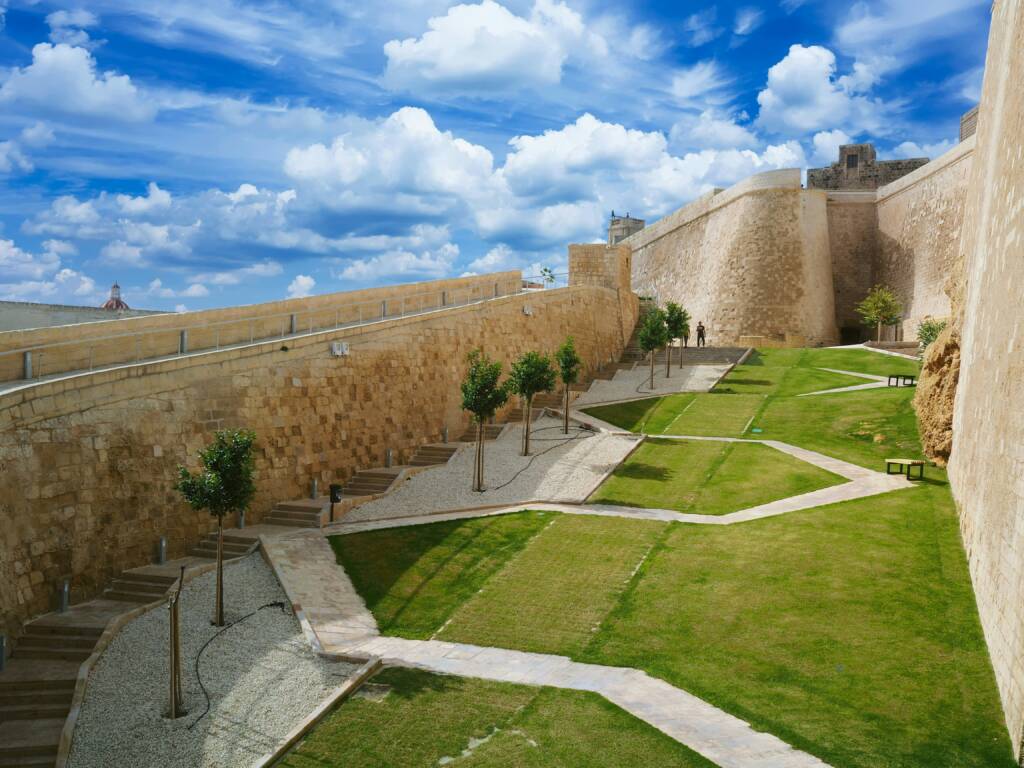
Perched atop a limestone plateau in the heart of Gozo’s capital, the Citadel has guarded the island since Bronze Age times, with successive layers of Roman, Arab, Norman, Knights’ and British fortifications. Today its stone ramparts offer one of Malta’s most spectacular vantage points—and a fascinating glimpse into Gozo’s past.
- Historic Highlights
Wander the narrow streets within the walls to discover:- St George’s Basilica: A Baroque masterpiece rebuilt after the 1693 earthquake, with an ornate interior and striking dome.
- Cathedral Museum: Housed in the former bishop’s palace, it displays liturgical vestments, silverware and devotional paintings.
- Old Prison Cells: Step into cramped cells carved into the rock—look for scratched graffiti left by inmates centuries ago.
- Archaeology Exhibits: Small displays of medieval ceramics and Knights’-era artefacts remind you how this hilltop citadel was Gozo’s administrative heart.
- Panoramic Walk
Follow the pathway around the bastions for uninterrupted 360° views:- North & East: Rolling fields, Comino’s silhouette and the Maltese mainland’s distant cliffs.
- South & West: Ramla Bay’s red sands, Xlendi’s rocky coast and the blue expanse of the Mediterranean.
Early morning or late afternoon light paints the limestone in warm honey tones—perfect for photographers and romance seekers alike.
- Practical Tips
- Opening Hours: Ramparts open daily from 07:00 to 20:00—no entry fee.
- Audio Guides: Available for a small charge at the tourist information office; these narrate the Citadel’s strategic importance, architectural features and restoration efforts.
- Accessibility: Paved ramps provide access to most bastion walks; some sections remain stepped and uneven.
- Facilities: Public toilets and a small café are located near the main entrance; bring water and sun protection, as shade is limited.
A stroll around Victoria’s Citadel combines fresh air, dramatic vistas and layers of history—making it an unmissable stop on any Gozo itinerary.
Touch the Ġgantija Temples
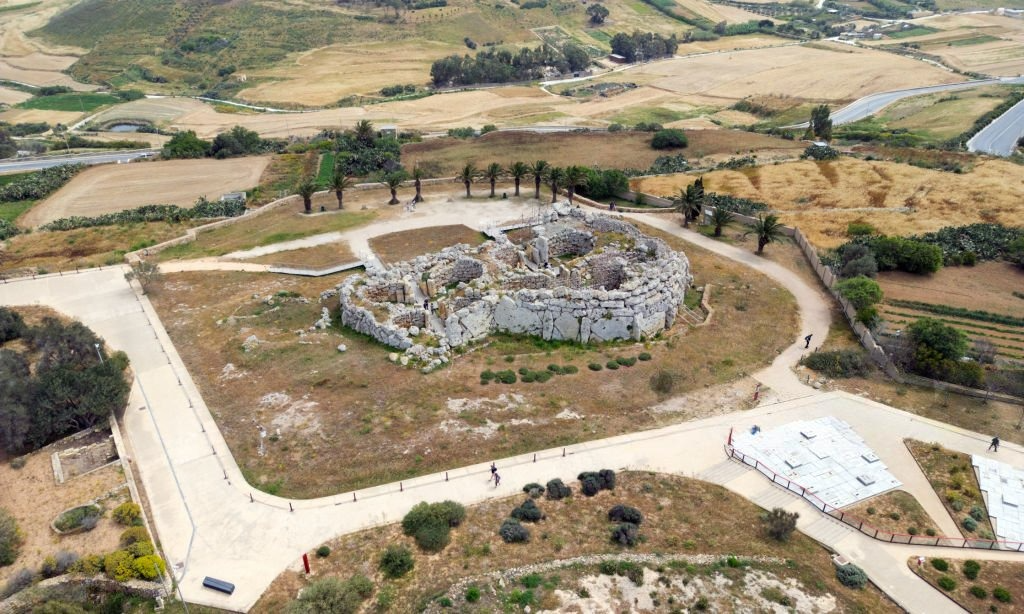
Perched on a gentle hill in Xagħra, Gozo, the Ġgantija Temples date back to around 3600 – 3200 BC, making them some of the oldest free-standing stone structures in the world—predating Egypt’s pyramids by nearly a millennium. This UNESCO World Heritage site comprises two adjacent temples, each built around a central trilithon entrance and flanked by crescent-shaped forecourts. The larger temple boasts upright megaliths reaching over five metres high; legend has it that giants (ġganti in Maltese) erected them in a single night.
Archaeologists believe these temples were dedicated to a Mother Goddess cult, judging by the numerous “fat lady” figurines and altars recovered on-site. Carved spiral motifs and deliberately placed voids suggest ritual use—possibly linked to lunar and solar cycles. In 2023, Netflix’s Ancient Apocalypse featured Ġgantija in its exploration of prehistoric societies, highlighting the temples’ astonishing preservation and the mystery of their builders’ engineering prowess.
Paths around the complex are and wheelchair-accessible, with interpretive panels explaining excavation layers, architectural techniques and recent conservation efforts. Photographers note the best light falls on the southern temple at sunrise, when the limestone glows pink against the Gozo countryside.
- Entry (€5): Audio guides are included—follow the numbered stations to learn how Neolithic builders quarried, transported and erected megaliths weighing up to 20 tonnes.
- Accessibility: Gentle slopes and paved walkways connect both temple enclosures; wheelchair users can cover most of the route.
- Next Stop: Bus #305 departs from the nearby Gozo bus terminus and reaches Ramla Bay in 10 minutes—so don’t forget your swimsuit for a post-temple dip!
Sunbathe at Ramla Bay
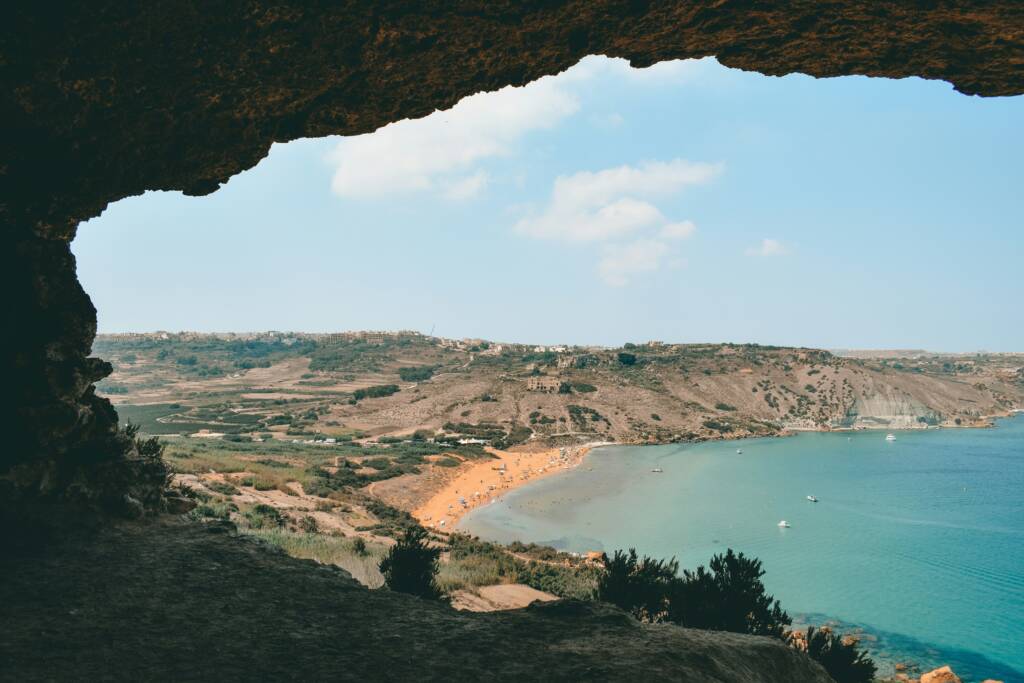
Ramla Bay’s warm, rust-coloured beach and gently shelving seabed make it one of Gozo’s most beloved spots—perfect for families, sunseekers and snorkellers alike. Here’s how to make the most of your visit:
- Getting There & Facilities
- Access: Regular buses (Route 305) run from Victoria’s Citadel square. If you’re driving, free parking is available just above the beach.
- Facilities: In summer you’ll find lifeguards on duty, public toilets and seasonal kiosks selling light snacks, ice-cream and cold drinks. Bring your own shade if you prefer quieter spots beyond the main cluster of sunbeds.
- Best Time to Visit
- Early Morning: Arrive around sunrise for solitude and cooler temperatures. The red sands glow in the soft light, and the water is glassy calm for your first dip.
- Late Afternoon: As the sun lowers, the cliffs turn rose-pink—ideal for photography and a peaceful end to your beach day.
- Sea & Snorkelling
- The shallow, clear waters close to shore are safe for children and novice swimmers. Venture towards the rocky outcrops at the bay’s eastern end for small schools of wrasse and the occasional octopus hiding in crevices.
- Equipment hire (snorkel, mask, fins) is often available from beachside kiosks or local shops in nearby Xagħra village.
- Calypso Cave Walk
- A well-marked path climbs behind the northern dunes, taking about five minutes to reach the viewpoint above Calypso Cave. According to legend, Homer’s nymph Calypso once held Odysseus captive here.
- Stick to the signposted trail—sections can be sandy and steep. From the rim, you can peer into the cave’s roof-carved entrance and enjoy sweeping views of the bay below.
- Sunbathing & Shade
- While sunbeds and umbrellas are available to rent from early spring to autumn, many visitors prefer to spread their own towels away from the crowds. Look for natural shade beneath tamarisk trees at the western end of the beach.
With its striking hue, gentle waters and a touch of myth, Ramla Bay delivers a quintessential Gozo experience—whether you’re here to swim, sunbathe or simply drink in that legendary view.
Evenings and Nightlife
As the sun dips, Malta’s social scene comes alive—whether you favor laid-back lounges or full-throttle clubbing.
Dance in Paceville
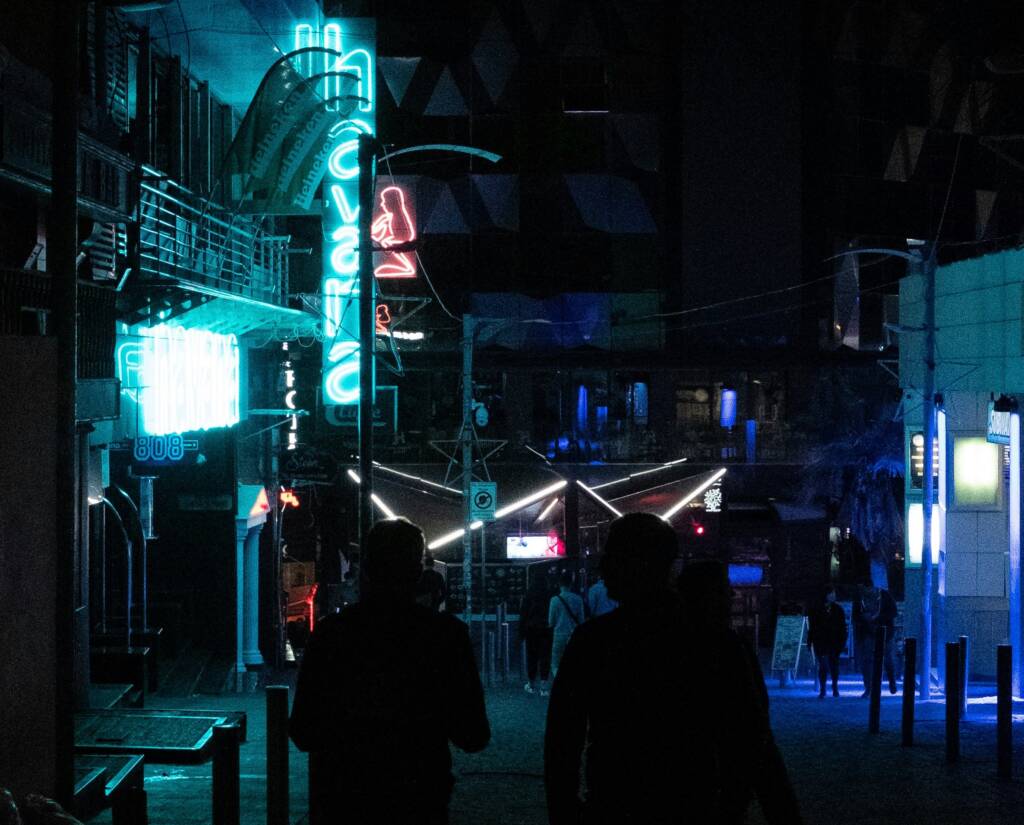
When the sun sets, the Paceville quarter of St Julian’s transforms into Malta’s premier nightlife playground. A compact grid of streets and alleys bursts with bars, pubs, lounges and nightclubs, catering to every taste—from laid-back craft-beer spots to high-energy dance floors.
- Venue Variety
You’ll find everything from cosy cocktail lounges tucked into converted townhouses to large, multi-room clubs with international DJs. Many venues feature themed nights—Latin rhythms on Mondays, 80s classics on Wednesdays, and chart-topping EDM on weekends—so check online event listings before you head out. - When to Go
Paceville comes alive around 21:00, with bars filling up by 22:30. If you’re aiming for the main dance clubs, plan to arrive after midnight, when the music peaks and the atmosphere really kicks in. Most spots stay open until 04:00 or later. - Dress Code & Entry
While each venue sets its own rules, a smart-casual look will see you right: neat jeans or trousers, a collared shirt or smart top, and closed-toe shoes. Avoid beachwear and sports gear. Entry is generally free before 23:00, though some nightclubs may charge a small cover fee or require advance online booking for weekend events. - Age Restrictions
The legal drinking age in Malta is 17, but many clubs enforce an 18+ policy after 23:00. Always carry a valid ID—police spot checks and venue door staff are strict about age verification. - Getting There & Home
Paceville is easily reached by bus (routes to St Julian’s run frequently from Valletta and Sliema) or by taxi. Note that roads in the immediate area can be busy until the early hours, so allow extra time for your ride home. Late-night buses run until around 02:00, and taxis are available 24/7—just agree a fare in advance if the meter isn’t used. - Late-Night Eats & Safety
After dancing, grab a slice of local pizza or a kebab from one of the many takeaway joints lining the main streets. Paceville is generally safe, but stick to well-lit roads, keep an eye on your belongings, and consider travelling in a group if you’re out very late.
With its concentrated mix of venues and vibrant street life, Paceville offers an unforgettable night out—just remember to plan your return journey and dress to impress!
Dine and Unwind in Valletta

Valletta’s compact, car-free streets are lined with cafés, bistros and bars that suit every mood—from leisurely morning espressos to elegant evening cocktails. Whether you’re craving a light pastry, a hearty lunch or a rooftop aperitif, you’ll find inviting spots at every turn.
- Morning Coffee & Pastries
Start your day at Caffè Cordina, a Valletta institution since 1837. Sneak into its graceful courtyard for a perfectly pulled espresso and a warm pastizzi or almond croissant. For a more modern twist, try Fontanella Tea Garden in the Upper Barrakka Gardens—its homemade cakes pair beautifully with sweeping harbour views. - Casual Lunch & Small Plates
For a relaxed midday meal, head to Rubino on Old Bakery Street. Its homely kitchens serve light salads, ftira sandwiches and traditional Maltese stews in cosy dining rooms. Nearby Streats brings street-food flair with creative bao buns, flatbreads and vegetarian mezze—ideal for sharing. - Riverside & Harbourfront Dining
Along Valletta’s fortifications, Bridge Bar offers laid-back waterfront seating where you can sip a chilled Kinnie or local craft beer as boats drift by. At sunset, the terrace at Fortizza in the Upper Barrakka Gardens transforms into a riverside lounge, complete with live acoustic music and sharing platters of grilled octopus and bruschetta. - Rooftop Lounges & Cocktail Bars
When darkness falls, make your way to The Harbour Club rooftop. Its sleek décor and panoramic views of the Grand Harbour set the scene for inventive cocktails—ask the bartender for a Maltese-inspired twist on a classic spritz. For something more intimate, Trabuxu Wine Bar on Strait Street pours curated local and international labels alongside cheese boards and charcuterie. - Evening Restaurants
For a full dinner experience, reserve at Noni, where farm-to-table ingredients meet refined Mediterranean flavours. Tuck into seabass carpaccio or rabbit ragu as the dining room’s soft lighting and gentle background music create a sophisticated ambience. Alternatively, Rampila—housed in Knights’ Bastion vaults—blends history and fine dining with vaulted ceilings, candlelight and dishes such as slow-braised lamb shank.
Whether you’re lingering over a mid-morning coffee or savouring a late-night cocktail, Valletta’s cafés and restaurants offer layers of flavour, atmosphere and local hospitality from dawn until well after dusk.
Catch Live Performances

Malta’s vibrant arts scene brings music, drama and dance to historic squares, fortifications and intimate theatres throughout the year. From open-air summer concerts to candlelit chamber recitals, here’s how to join the show:
- Seasonal Festivals & Programmes
- Spring–Early Summer: The Malta International Arts Festival stages ballet, opera and contemporary theatre amid historic backdrops. Programme announcements appear in April—book popular performances (such as dance troupes in a Baroque courtyard) well in advance.
- MTV Isle of MTV: Each June, Malta hosts the free “Isle of MTV” open-air concert on the Floriana Granaries stage. Expect international pop and dance stars, elaborate light shows and a buzz that spills into late night—arrive early to secure a good spot.
- Summer Evenings: Outdoor concerts in city bastions, village squares and even limestone quarries showcase local jazz nights, folk ensembles and world-music acts—often free of charge. Aim to get there at least 20 minutes early to claim a folding chair or a patch of wall.
- Historic Theatre Venues
- Teatru Manoel: One of Europe’s oldest working theatres, its candlelit auditorium hosts classical plays, chamber concerts and film screenings. Look for English-language performances and occasional backstage tours.
- Fort St Elmo & Fort St Angelo: In summer, these grand fortresses transform into open-air stages for Shakespeare under the stars or orchestral recitals with panoramic harbour views.
- Street Music & Impromptu Performances
- Valletta’s Lantern-Lit Arches: After dusk, guitarists, violinists and vocalists often set up beneath the city’s stone arches—drop a small coin in their case to show appreciation.
- Village Festa Concerts: During summer festas, brass bands parade through streets and finish with informal concerts in village squares. Listen for the evening trumpet call to know where the music’s gathering.
- Booking & Practical Tips
- Check Official Portals: Visit sites like maltaartsfestival.org, mtv.com or local council pages for event calendars. Sign up for email alerts in spring to get early-bird news.
- Seating & Dress: Outdoor venues use folding chairs—bring a wrap or light jacket for cooler nights. Smart-casual attire works whether you’re in a historic hall or a village piazza.
- Transport: Many shows start at dusk—plan your bus or taxi ride home before the last service departs. Summer often sees special late-night routes between major venues and transport hubs.
Whether you find yourself at a free MTV-sized pop spectacle, a chamber concert under vaulted ceilings or a folk ensemble on a bastion terrace, Malta’s live-performance calendar is rich, varied and always memorable. Arrive early, stay late, and let the islands’ historic stages come alive around you.
Learn English in Malta

With English as one of its two official languages, Malta offers an ideal setting to improve your skills while basking in Mediterranean sunshine. From accredited language schools to immersive homestays, here’s how to make the most of your English-learning adventure.
- Accredited Schools & Programmes
Malta hosts over 80 English-language centres accredited by the Maltese Ministry of Education and recognised by global bodies such as English UK or ALTO. You’ll find courses tailored for all levels and ages—General English, Business English, exam preparation (IELTS, Cambridge), and specialised options like legal or medical English. Classes typically run 20–25 hours per week, with small-group sizes (8–12 students) for maximum practice. - Immersive Environment
Beyond the classroom, every café order, bus announcement and conversation in Valletta, Sliema or St Julian’s is in English. Many schools organise weekly social activities—film nights, pub quizzes, coastal hikes—so you can practise speaking in real-world situations and make fellow students into friends. - Accommodation Options
- Host Families: Live with a Maltese family for half-board or full-board; you’ll enjoy home-cooked meals and daily English practice at the dinner table.
- Student Residences: Modern apartments close to school with single or shared rooms, communal kitchens and social lounges.
- Private Apartments: For independent travellers, furnished flats in towns like St Paul’s Bay or Mellieħa can be booked short-term through local agencies.
- Costs & Timing
- Tuition Fees: Average around €150–€200 per week for 20 lessons, with discounts for longer stays (12+ weeks).
- High & Low Season: July and August see peak enrolment (and slightly higher prices), while spring and autumn offer smaller classes and off-peak rates.
- Visas: EU citizens study visa-free. Non-EU students booking 12+ weeks may need a student residence permit—your school’s admissions office can guide you through the simple application.
- Practical Tips for Success
- Placement Test: Arrive early for your written and oral assessment so you’re placed in the most suitable level group.
- Language Partners: Ask your school if they run a “tandem” programme—pairing you with local students keen to learn your language in exchange.
- Local Libraries: Borrow English-language novels, newspapers and films for extra exposure—many branch libraries host free conversation clubs.
- Part-Time Work: EU nationals can take on casual roles in cafés or summer camps, providing more chances to hone your English and earn pocket money.
At our school, SMART School of English, we combine accredited, small‐group lessons with a warm Mediterranean atmosphere to ensure you progress quickly and confidently. Our experienced, native-speaking tutors tailor each class to your goals—whether you’re aiming for exam success, business fluency or everyday conversation—and keep student numbers low so you always get plenty of speaking practice. Located in the heart of Malta’s sunniest seaside town, we organise regular social events, cultural excursions and volunteer opportunities that immerse you in real-world English and local life. With comfy homestays and purpose-built student residences just a short stroll from campus, plus dedicated support for visa applications and airport transfers, your learning journey is seamless from day one. Join us and discover why so many students leave not only with stronger English, but with friends and memories to last a lifetime.
Whether you’re aiming to sharpen your professional vocabulary or simply gain confidence in conversation, Malta’s blend of quality instruction, English-speaking surroundings and sunny lifestyle makes it a top choice for learners of all ages. Embrace every opportunity—your fluency will grow as naturally as the island’s bougainvillaea blooms!
Final Tips for a Smooth Trip

Before you set off on your Maltese adventure, keep these handy pointers in mind to save time, money and any last-minute headaches:
- Getting Around
- Public Transport: Download the Tallinja App for live bus tracking and mobile ticketing. A single-ride ticket costs €2 (valid for all Malta buses and the Gozo ferry – simply show your ticket on board). Day and multi-day passes offer better value if you plan several journeys.
- Taxis & Ride-Shares: Taxis charge by the metre and can be hailed on the street or pre-booked. Ride-share apps also operate on Malta’s main islands. Agree fares in advance for trips from airport or late-night journeys.
- Driving & Parking: Left-hand drive applies. Narrow streets and limited parking make driving in central Valletta and Mdina challenging—consider leaving your hire car on the outskirts or in designated park & ride lots.
- When to Visit Attractions
- Opening Hours: Most archaeological sites, museums and heritage attractions close around 17:00 (some earlier in winter). Plan indoor, market or café visits between 13:00–15:00 when the midday sun peaks and sites take their lunch break.
- Early Starts & Golden Hour: Beat crowds (and the heat) by arriving at popular spots for first-light or late-afternoon visits, when both light and temperatures are kinder.
- Money Matters
- Currency & Payments: Malta uses the euro. While most cafés, shops and restaurants accept cards, many village-level stalls and small bakeries are cash-only. Keep a stash of small notes (€5 and €10) and coins for market snacks or car-park machines.
- Tipping: A service charge may appear on restaurant bills; otherwise, leave around 5–10% if you enjoyed the meal. Rounding up taxi fares and a small tip for hotel porters is customary but never obligatory.
- Practical Packing
- Footwear: Sturdy, comfortable shoes are a must for cobbled streets, temple paths and rocky trails.
- Clothing: Lightweight, breathable layers for daytime; a light jacket or shawl for breezy evenings or air-conditioned interiors.
- Swim Essentials: Pack swimwear, a quick-dry towel and reef-safe sunscreen—you’ll find beaches and grottoes everywhere you turn.
- Extras: A refillable water bottle (tap water in Malta is pot able), sun-hat, sunglasses and a small day-pack for your daily essentials.
- Staying Connected
- SIM & Wi-Fi: Free Wi-Fi is common in cafés and tourist hubs. For reliable data inland and on Gozo, pick up a local SIM card at the airport or town kiosks.
- Power & Adapters: Malta uses UK-style three-pin sockets (Type G). Bring a universal adapter if your plugs differ.
- Local Customs & Safety
- Language: Maltese and English are both official—most locals speak fluent English, so phrasing questions clearly is all you need.
- Respectful Dress: When visiting churches or religious sites, cover shoulders and knees.
- General Safety: Malta is very safe, but keep an eye on belongings in crowded markets and buses. Always follow guide or signage instructions at heritage sites for your protection and for preservation of the monuments.
With these insider tips under your belt, you’re all set to uncover Malta and Gozo’s history, nature, culture and culinary delights without a hitch.



